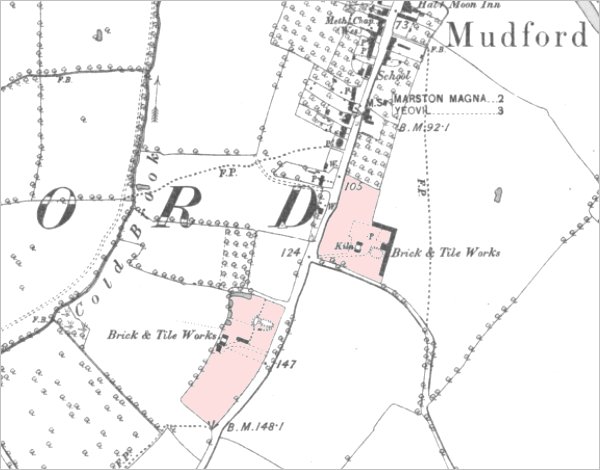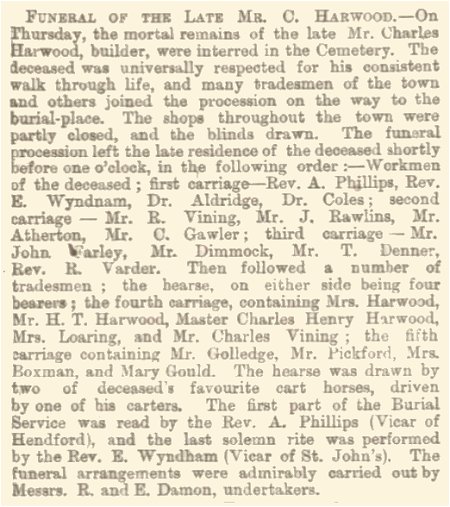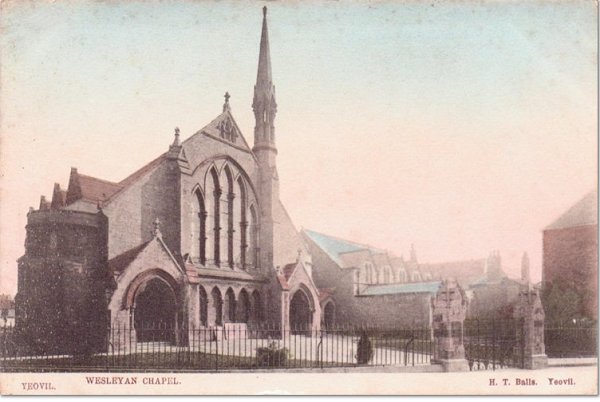yeovil people
Charles Harwood
Builder and Brickmaker
Charles Harwood was born in Yeovil in 1820, the son of mason Thomas Harwood (1791-1873) and Sarah née Hooper (1791-1871). Charles had younger siblings; Caroline (b1823), Harriett (b1829) and George (b1831). Thomas Harwood, of Vicarage Street, gave evidence at the trial of the rioters involved in the 1831 Reform Riot in Yeovil, at the Taunton Assizes of 3 April 1832 to the 9 April 1832. Thomas was frequently recorded in the Churchwardens' Accounts as receiving payment for work at St John's church from 1839 until at least 1855. Indeed, the Churchwardens' Accounts recorded that on 22 September 1855, Thomas Harwood was paid £60 (around £6,650 at today's value) for restoring the buttress of St John's church - work that would be continued by his son, Charles, some fifteen years later.
On 4 February 1845, at St John's church, 25-year-old Charles married 31-year-old Maria Morse (1814-1893) at Yeovil. Charles gave his occupation as a mason, Maria gave hers as a servant. They were to have two children, both born in Yeovil; Henry Thomas (1845-1888) and Caroline Jane (b1849).
In the 1851 census, Charles and Maria were living in Vicarage Street with their two infant children. Charles listed his occupation as a Mason. He was, in 1859, a subscriber to the renovation of St John's church, subscribing £5 (worth around £600 at today's value).
In 1862, Charles subscribed one guinea (around £120 at today's value) towards the cost of the new west window in St John's church in memory of Prince Albert.
During the 1850s, Charles founded his own building firm and by the time of the 1861 he was a "Builder employing 10 men and 12 Boys". His builder's yard was also in Vicarage Street. He was also the Yeovil agent for the Globe Insurance Company of London through to 1865. From 1865, Charles was the Yeovil agent for the newly-merged Liverpool & London & Globe Insurance Company.
Charles was recorded as a builder and brickmaker in Harrison, Harrod & Co's Directory of 1859, Kelly's Directory of 1866, Morris & Co's Directory of 1872, Kelly's Directory of 1875.
In April 1862, Charles and his father Thomas were listed among those subscribing to the new west window in St John's church in memory of Prince Albert. They each subscribed one guinea (around £120 at today's value).
During 1870, Charles was engaged in works to strengthen the fabric of St John's church, and the 5 November 1870 edition of the Southern Times and Dorset County Herald reported: "In connection with the substantial strengthening of the fabric which had been attained by the external repairs, Mr Harbin also mentioned the builder who had done the work - Mr Charles Harwood - a better workman than whom he never saw, nor a more moderate man."
In the 4 May 1872 edition of the Southern Times and Dorset County Herald it was reported, regarding further works to the fabric of At John's church: "The southern wall has been very skillfully strengthened, new stones being introduced after careful removal of the decayed and crumbling parts of the fabric. The work has been done by Mr Charles Harwood, builder."
By 1871, Charles was an established builder and it was noted in the census that he employed '32 men and 10 boys'. Further, he was a brickmaker and owned and operated the Mudford Brick & Tile Works. This was a common practice at the time and several Yeovil builders owned their own brickworks to ensure a ready supply of bricks for their building projects. He still lived in Vicarage Street with Maria, his father Thomas and a domestic servant.
Charles died in Yeovil on 21 March 1879, aged 59, and was buried in St John's churchyard on 27 March.
Following his death, his business passed on the his son, Henry. Initially, Henry Harwood had tried to run the business himself, employing fourteen men in 1881, but since his main occupation was as a chemist, he did not have the necessary skills and, in 1882, he sold the Mudford brickworks to Edwin Bartlett.
Map

The 1886 Ordnance Survey map showing the location of Charles Harwoods' Mudford Brick & Tile works, spread over two sites.
gallery

The record of Charles and Maria's marriage on 4 February 1845, from St John's parish register.

The 10 August 1878 edition of the Somerset County Gazette reported that Charles was summoned for having one or more wells on his rented premises containing unfit drinking water. The outcome of the case is unknown, but Charles was dead a few months later.

The record of Charles' burial of 27 March 1879, from St John's parish register.

The report of Charles' funeral from the 28 March 1879 edition of the Western Gazette.
Known building projects

From my
collection.
This
image
features in my
book 'Yeovil
- The Postcard
Collection'.
A hand-coloured version of a postcard of the Wesleyan Methodist church, post-marked 1906.
In 1869-1870 the new Wesleyan Methodist church was built in Vicarage Street and opened on 30 March 1870. The Southern Times, in its edition of 9 April 1870, reported "The architect was Mr Alexander Lander of Barnstaple; and the contractors by whom the work has been very satisfactorily and creditably carried out are Messrs Bartlett & Son, of Coker, and Mr Charles Harwood, of Yeovil. The building, which cost £3,289 [around £450,000 at today's value] including purchase of land, is in the Early English Gothic style, and built entirely of the local Ham-hill stone".